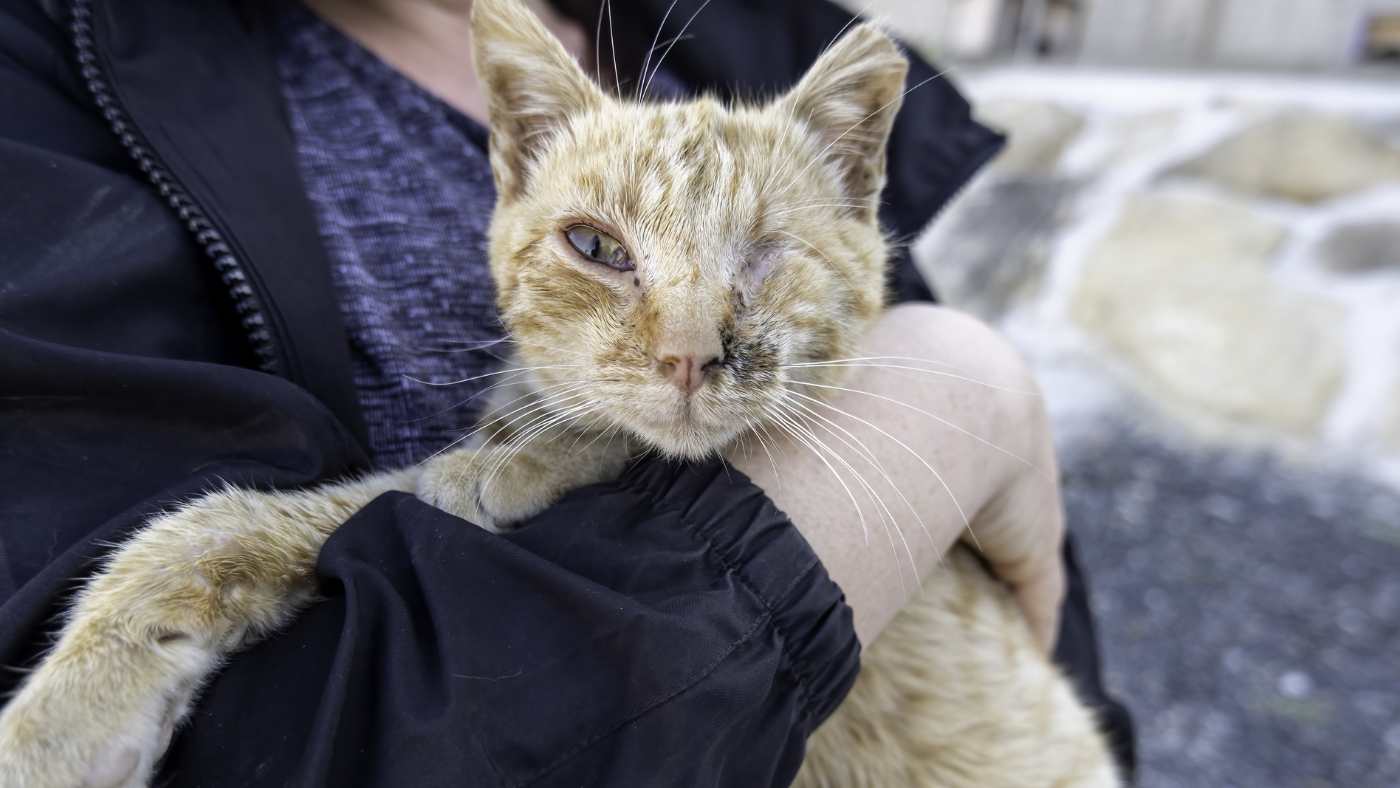骨折是怎樣發生的?
寵物天生好奇且活躍,有時會導致不幸的事故。骨折因跌倒、車禍、激烈玩耍或骨質疏鬆症或腫瘤等導致骨頭變脆的潛在健康狀況而發生。
寵物骨折的跡象
如果寵物遭受了外傷,飼主應注意以下症狀:
- 跛行或拒絕用某條肢體支撐體重
- 腫脹或瘀傷
- 明顯的骨頭變形
- 嗚咽、嚎叫或出現疼痛的症狀
- 食慾不振或異常嗜睡
如果飼主發現到任何這些情況,請立即尋求獸醫護理。
手術:預期情況
何時需要手術?
並非所有骨折都需要手術。一些輕微的骨折可以通過休息和固定來癒合。然而,手術在以下情況下是必要的:
- 骨頭完全斷裂並錯位
- 同一肢體有多處骨折
- 受傷影響承重骨
- 骨折涉及關節
骨折手術的類型
行根據骨折的嚴重程度,獸醫有機會建議施行以下手術:
內固定
使用金屬板、螺絲或鋼條將骨頭固定到位。這種方法非常適合需要高穩定性的骨折。透過手術植入金屬部件,使骨骼在癒合期間保持對齊。隨著時間的過去,寵物的身體會適應該些金屬部件,在大多數情況下,除非出現併發症,否則不需要額外的手術來移除。
外固定
骨針和外固定器從外部穩定骨骼。這種方法對於複雜骨折或手術創傷太嚴重的情況很有用。外固定器將骨頭固定到位,而不會過度打開骨折部位,從而降低感染風險。然而,需要定期維護,並且寵物需要追蹤監測癒合情況,並確保外固定器保持安全。
截肢
在極端情況下,如果無法挽救肢體,截肢是唯一的選擇。雖然這看起來很極端,但寵物通常能很好地適應三條腿的生活。通過適當的康復和護理,寵物很快就能學會如何平衡和舒適地走動。大多數寵物即使失去一條腿後,仍能過著快樂而活躍的生活,這證明了寵物的韌性和適應能力。
每項手術的目的是令寵物恢復功能,並減輕痛楚。
恢復過程:幫助寵物康復
術後即時護理
當寵物回家後,飼主可以通過以下方式支持其康復:
疼痛管理
獸醫會處方止痛藥和消炎藥。飼主務必監測任何副作用,如嗜睡、食慾不振或消化問題,如發現任何異常情況時,請即通知獸醫。
休息和限制活動
避免跳躍、奔跑或激烈玩耍。考慮將寵物限制在舒適、安全的地方,這樣寵物就不會過於活躍。飼主可以使用寵物圍欄、寵物籠或鋪上柔軟床墊的指定恢復空間,讓寵物保持放鬆和安全。
傷口護理
保持手術部位清潔乾爽以防止感染。定期檢查是否有感染的跡象,如紅腫或分泌物,並按照獸醫的指示清潔該傷口。使用伊麗莎白頸圈(錐形項圈)或恢復服,以防止寵物舔或咬傷口,這或會導致減緩癒合速度或引入細菌。
回診檢查
定期獸醫檢查確保癒合進展順利。請務必向獸醫詢問有關恢復里程碑的任何問題,以及哪些跡象顯示寵物已經準備好進行更多活動。

促進更快癒合的營養
富含蛋白質、維生素和礦物質的均衡飲食有助於骨骼癒合。飼主應考慮添加以下營養:
鈣&磷
這些礦物質常見於乳製品、魚類和綠葉蔬菜中。這些礦物質是骨骼結構和強度的基礎,有助於重建骨折。
維生素D
這對鈣吸收至關重要。日曬和富含維生素D的寵物食品有助維持鈣的最佳水平,但在添加補充劑之前,飼主應先諮詢獸醫。
Omega-3脂肪酸
這些健康脂肪有助於減少炎症,並支持組織修復。Omega-3脂肪酸常見於魚油、亞麻籽和專門配製的寵物食品中,不僅有助於減少術後的腫脹,還能改善寵物的整體免疫功能和關節健康。
長期護理和預防未來受傷
物理治療與復健
一旦獸醫允許寵物活動,物理治療有助於恢復力量和活動能力。這過程對於確保其肌肉保持強健並恢復受影響肢體的全部功能至關重要,還有助於防止因長時間不動而導致的長期僵硬和不適。
技術包括:
- 輕柔的拉伸和關節活動度練習:這些練習可提高靈活性,並幫助保持關節活動度,從而減輕僵硬的風險。獸醫或專業治療師或會指導飼主如何在家中安全地進行這些動作。
- 水中物理治療(水療):浮力減輕了關節的壓力,同時讓寵物可以自由活動。這項療法對於從重大骨折中恢復的寵物特別有用,因為可以增強肌肉,而不會對正在癒合的骨骼施加太大的壓力。
- 激光治療以緩解疼痛:激光治療可以通過刺激細胞修復來減少炎症,並加速癒合。許多寵物發現這種療法很舒適,因為有助於減輕疼痛,並改善受患處的血液循環。
調整家居舒適度調整
為了讓寵物在恢復過程中感到更輕鬆,一些家居小調整可大幅度確保順利恢復。由於寵物的活動受到限制,建造安全和支持性的環境將有助於防止進一步的受傷並促進癒合。
- 提供柔軟的寢具以減輕關節壓力:舒適且有軟墊的床可以防止疼痛和不適,特別是對於需要長時間休息的寵物。矯形寵物床可以提供額外的支撐並均勻分佈體重。
- 使用斜坡代替樓梯:對於正在骨折癒合的寵物來說,爬樓梯或很困難,甚至很危險。斜坡提供了平緩的傾斜度,使寵物更容易上床、坐上沙發或經過入口通道等,而不會對骨骼造成過大的壓力。
- 將寵物留在室內或受控環境中以防止意外:限制寵物接觸戶外危險,如濕滑的地板、其他動物或崎嶇的地形。飼主應考慮使用護欄在家中劃分安全區域,讓寵物可以自由活動而不受風險。
預防未來骨折
預防未來受傷與幫助寵物康復同樣重要。採取一些主動措施,飼主可盡量降低骨折風險,並確保長期健康。
- 監督戶外活動,特別是在道路或高處附近:當寵物在戶外時,請務必密切關注寵物的活動,特別是在陡峭斜坡、繁忙街道或崎嶇的地形等潛在危險區域。飼主應考慮使用胸背帶或拖帶在陌生的環境中保持控制。。
- 保持寵物的健康體重以減輕骨骼壓力:體重過重會對骨骼和關節帶來額外的壓力,增加骨折和關節炎的風險。根據寵物的需要製定均衡飲食和定期運動可以幫助其維持健康體重。
- 為年長的寵物提供關節補充劑:隨著寵物年齡的增長,其骨骼和關節變得更脆弱。含有葡萄糖胺、軟骨素和Omega-3脂肪酸的補充劑可以支持關節健康和活動能力,降低老年寵物骨折的可能性。
何時尋求獸醫幫助
即使康復後,也要監測寵物是否有以下情況:
- 持續的跛行或僵硬
- 手術部位附近的腫脹或發紅
- 不願意使用受影響的肢體
- 表示疼痛的行為變化
早期介入可確保寵物保持舒適和活躍。
需要幫助嗎?與我們聯絡
如果寵物遇到緊急情況,或需要預約一般檢查及查詢,請致電 VEC香港獸醫急症中心。
📞一般查詢及預約: 2334-2334
🚨二十四小時緊急熱線: 6828-6620












